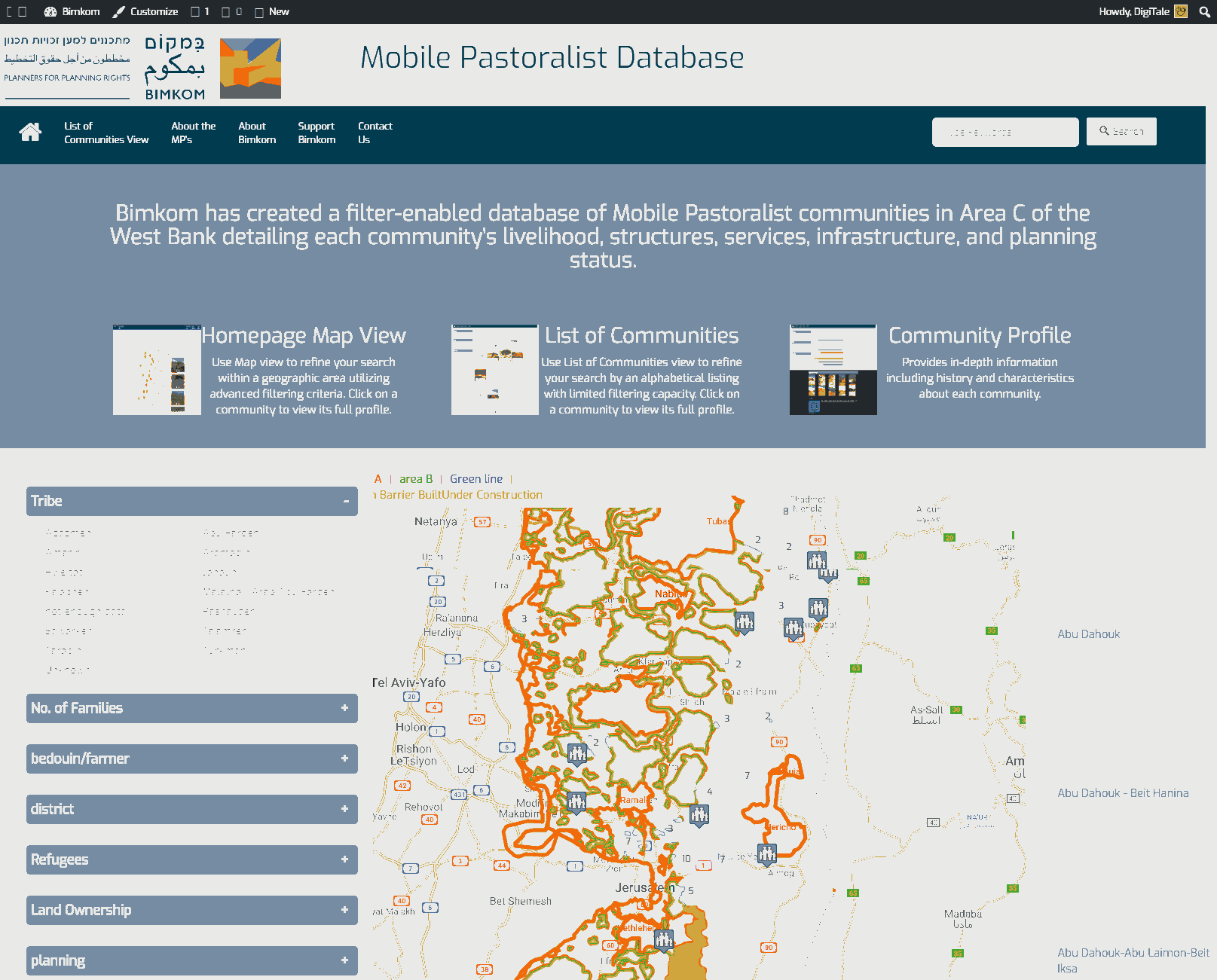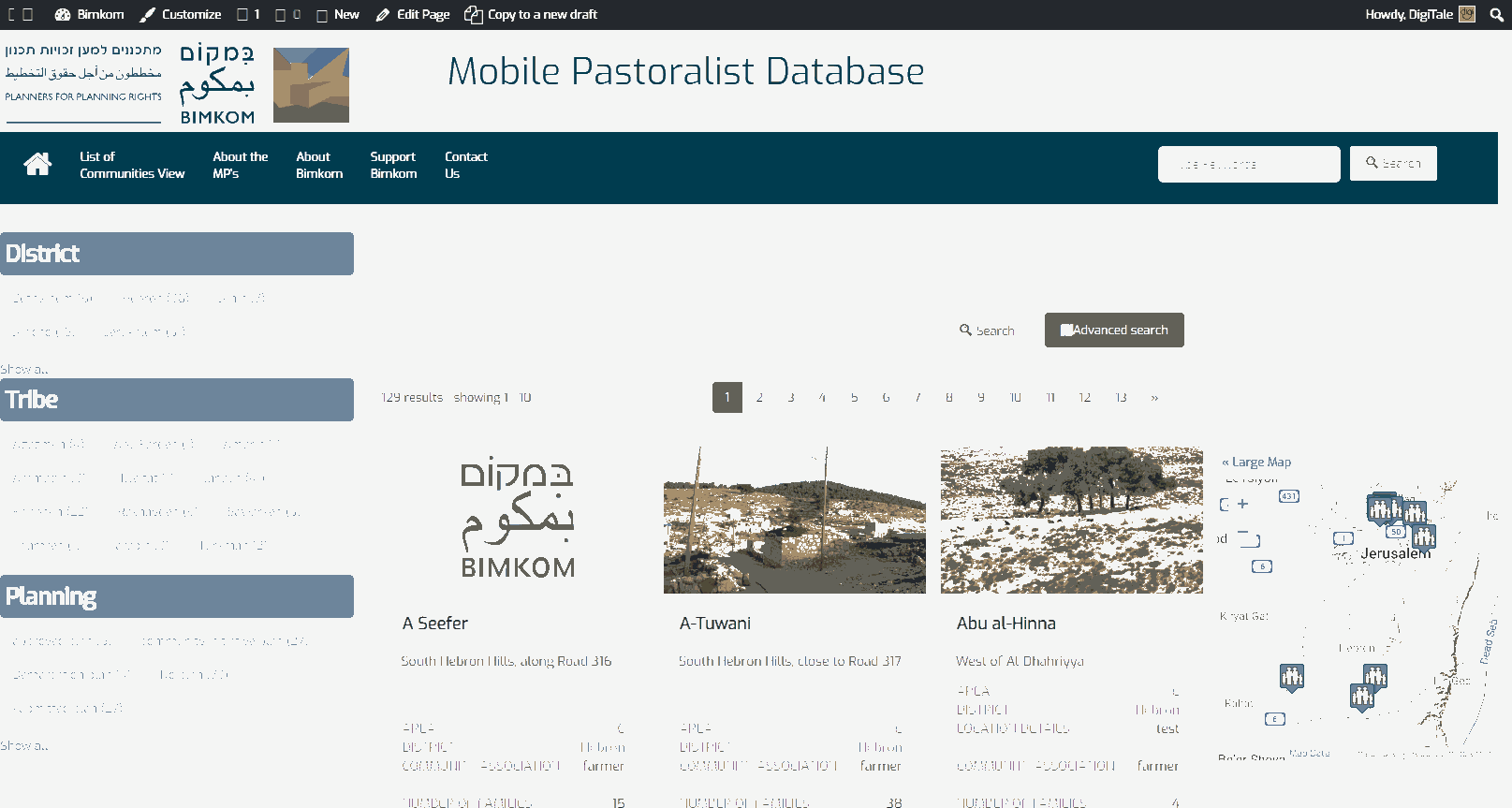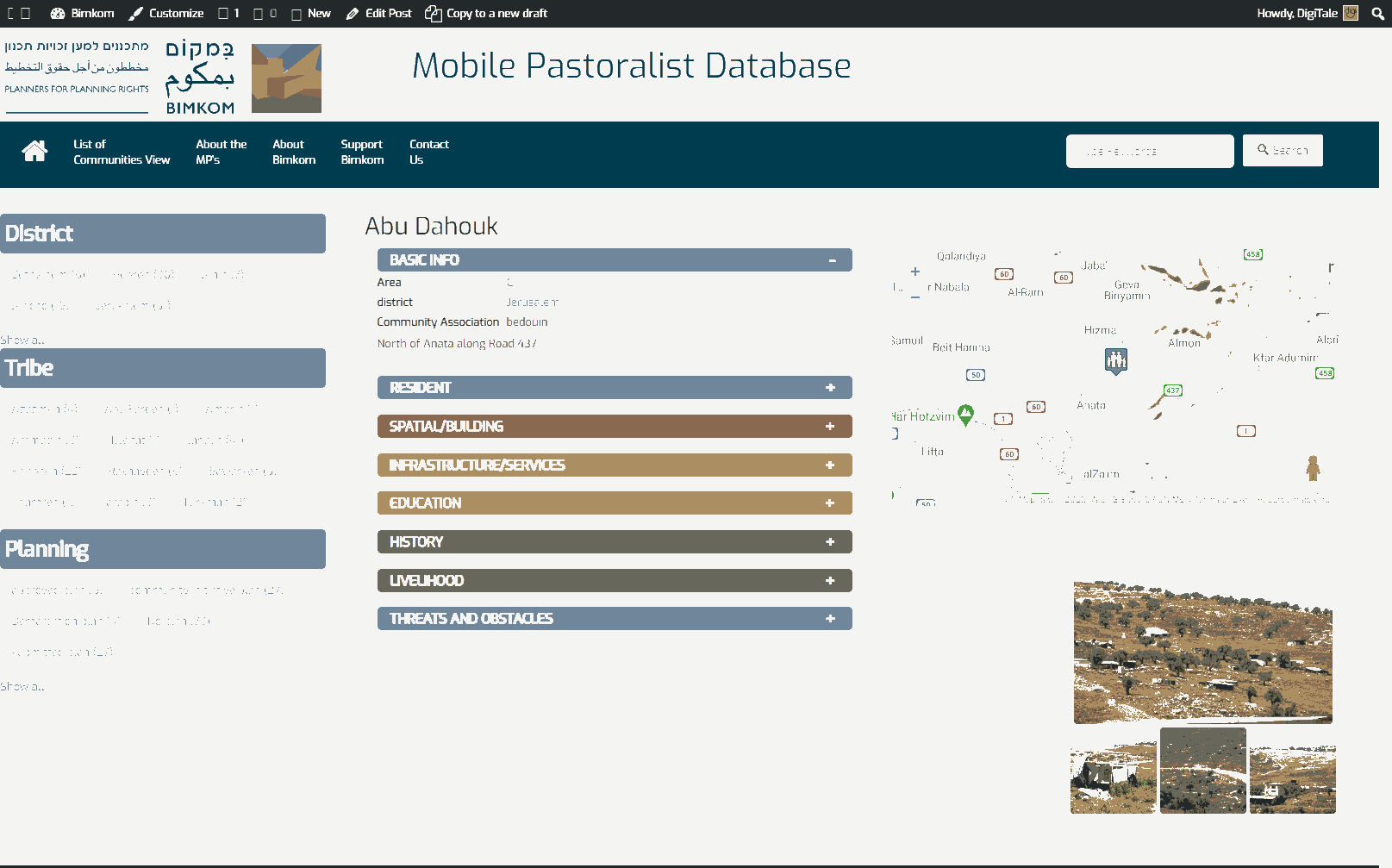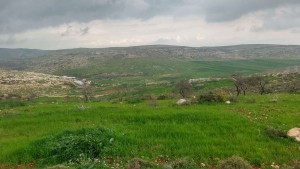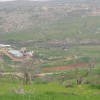Central West Bank, southwest of Aqraba, South east to Nablus
Khirbet at-Tawil -Tell al Khashaba
Resident
Number of Families
32
Names of Families
Bani Jaber, Bani Fadel, Bani Menhe
Farmers Origin/Family
From Aqraba Village
Refugees
not refugee
Spatial/Building
Land Ownership
private
Planning
submitted plan
Planning - details
A plan was prepared with the International Peace and Cooperation Center - IPCC the plan didn't receive any advanced phase.
Structure Type
- tin shack
- concrete
Infrastructure/Services
Access to Community
- private vehicle
- 4X4 vehicle
Access to Community - details
The access to the community is from the center of Aqraba towards the east side through agricultural roads.
Water Access
- water tank
- connection to neighboring village
- cistern\well
Water Access - details
The water pipe reaches very few houses, in the southern and northern parts of the community.
The areas also has several water cisterns. Many of these were built or rehabilitated by the community in collaboration with an Italian NGO. Until 2014 25 cisterns were rehabilitated and in 2015, 19 more. The cisterns have enough water only until May, during the rest of the year the community buys water tanks.
The areas also has several water cisterns. Many of these were built or rehabilitated by the community in collaboration with an Italian NGO. Until 2014 25 cisterns were rehabilitated and in 2015, 19 more. The cisterns have enough water only until May, during the rest of the year the community buys water tanks.
Electric Connection
Electric Connection - details
In 2004 the community received funding from the Belgium embassy to establish an electric network. 95 electric poles were built, and they supported about 25 families, particularly those whose herds were their only source of income. In 2008 inspectors from the sub-committee for of the ICA declared the system unauthorized. The community filed for a permit with the help of Al-Quds center but the request was never answered. In 2009 the ICA demolished 69 poles. The community built them again and requested the Belgium embassy to pressure Israel not to destroy them again. They were not destroyed since.
Health Care
- clinic in neighboring community
- clinic in distant town/village
Health Care - details
The nearest clinic is in Aqraba and the nearest hospital is the Rafidya hospital in Nablus.
Location of Services
Aqraba Village and Nablus
Education
Kindergarten
No
Location of School #1
Between Aqraba and Khirbet Twaiel
general description [school #1]
- Boys
- Girls
- Primary school
Distances to schools [school #1]
1001 - 2000 meters
Location of School #2
Between Aqraba and Khirbet Twaiel
Time to schools [school #1]
16 - 30 minutes
general description [school #2]
- Boys
- Girls
- Middle school
Time to schools [school #2]
16 - 30 minutes
Distances to schools [school #2]
1001 - 2000 meters
Location of School #3
Aqraba
general description [school #3]
- Boys
- Girls
- High School
Distances to schools [school #3]
2001 - 5000 meters
Time to schools [school #3]
16 - 30 minutes
Schools - details
The primary school is located in area B in the eastern edge of Aqraba. It is small and each two grades study together, in the same classroom. The community has filed a request to the ICA to built another school in area C but the request was denied. The road to the school is not lit and has no draining system, so buses cannot take the children to the school, they have to walk. In the winter the walk is difficult as the road can become muddy.
Travel to school [school #1]
- bus
- difficult walk
- donkey
- private car
Travel to school [school #2]
- bus
- difficult walk
- donkey
- private car
Travel to school [school #3]
- bus
- difficult walk
- donkey
- private car
Accessibility to school [school #1]
4
Accessibility to school [school #2]
4
Accessibility to school [school #3]
4
History
History
Originally from Aqraba. In 1967 many escaped to Jordan and some came back to Aqraba. Those who had herds stayed in the area as they could not reach Aqraba with the herds.
The village is among other localities in the area that were built back in the Roman period.
The village is among other localities in the area that were built back in the Roman period.
livelihood
Seasonal Movement
partly
Seasonal Movement - details
Part of the family members, mainly children and women, move to Aqraba in the summer, some stay permanently in the Khirbet Twaiel.
Some go to Fasaiel for seasonal grazing (Izbeh).
Some go to Fasaiel for seasonal grazing (Izbeh).
Community Initiatives
- water
- elec'
Other Occupation
- shepherding
- agriculture
Main Occupation
- shepherding
- agriculture
Woman's Occupation
- taking care of the herd
- taking care of the kids
- housekeeping
- agriculture
Threats and obstacles
Threats and Obstacles
fjfxjsfjsyjsyj
- firing zone/closed military zone
- settler violence
Threats and Obstacles - details
In 1997 the eastern part of the village was declared a closed military zone, following the Oslo agreement. In 2015 the area was declared a training military zone. This caused tanks to invade the area at night and destroy corps of barley and wheat. According to the inhabitants, they contacted the military commander in charge who asked them to make a list of the areas that were destroyed, and they will be compensated. The inhabitants then turned to the Palestinian ministry of agriculture in order to assess the damage but nothing has been done.
The surrounding settlements and military zones leave very little area for grazing. The community reports that settlers steal the sheep and bully the shepherds, which severely damages their only source of income.
The surrounding settlements and military zones leave very little area for grazing. The community reports that settlers steal the sheep and bully the shepherds, which severely damages their only source of income.
Number of Demolition Orders
51
Number of Demolitions
24
Demolitions - date of update
September 17, 2010
Demolitions - details
Members from the community report that demolitions of private structures (houses and storage units) took place in 2008 and 2013. In 2014 a bigger demolition campaign took place: 3 cisterns (one of them contained 400 cubic meters of water), a few houses (some of which were built before 1967), and the mosque were destroyed. The houses were rebuilt by the community and destroyed after two days by the ICA. The Palestinian Red Cross donated tents following this event, and those were demolished by the ICA in May 14th, 2014.

